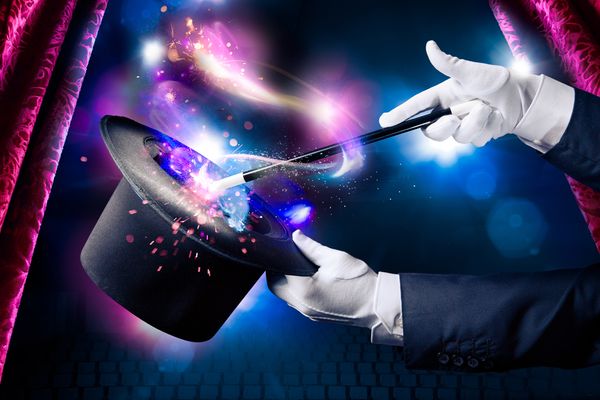11.1.2
Love Through the Ages
Love Through the Ages
Love Through the Ages
The aim of this topic area is to encourage students to explore aspects of a central literary theme as seen over time, using unseen material and set texts.


Love through the Ages
Love through the Ages
- Students should be prepared for Love through the Ages by reading widely in the topic area, reading texts from a range of authors and times.
- The range of texts (of which Othello is one) allows students to study representations of love by a variety of authors across time.


The exam
The exam
- Within the examination, students study three texts:
- One poem.
- One prose text, of which one must be written pre-1900.
- One Shakespeare play (Othello).
- You will also respond to two unseen poems in the exam.


Aspects of love to explore
Aspects of love to explore
- Although not an exhaustive list of Aspects of Love through the Ages, areas that can usefully be explored include:


Romantic love of many kinds
Romantic love of many kinds
- Romantic love of many kinds:
- Othello and Desdemona.
- Iago and Emilia (but failed and damaged).
- Cassio and Bianca.


Love and sex
Love and sex
- Love and sex:
- Othello and Desdemona.
- Iago and Emilia—and her dissatisfaction.
- Cassio and Bianca—the notion of paying for sex/love.
- Love and Sex in the context of the 1600s in general and the historical period and place the play is set.
- Desdemona’s interest in sex.


Love and loss
Love and loss
- Love and loss:
- Othello’s suspicion and jealousy, feeling like he has lost Desdemona to Cassio.
- Emilia realising that she has lost Iago.
- Othello killing Desdemona.
- Desdemona (alive enough) to realise Othello’s death.
- The failure of Cassio and Bianca’s relationship.
- Cassio’s injury and Bianca’s reaction.
Love Through the Ages 2
Love Through the Ages 2
Although not an exhaustive list of Aspects of Love through the Ages, areas that can usefully be explored include:


History and time
History and time
- Love through the ages according to history and time:
- Conventions during the Renaissance.
- The ability of those at the top of society to do what they want.
- The challenge of the ‘new man’ in the form of Iago.
- The way that relationships are conducted between men and women.
- The legitimacy of courtiers / prostitution.
- The conventions of marriage.


Individual lives
Individual lives
- Individual lives (young love, maturing love):
- Othello and Desdemona when younger, but also their maturity at the end of the play - reverting perhaps to childishness once more.
- The impact of thinking one is being deceived.
- The fear that one partner thinks the other partner believes they are having an affair.
- Love and sex, paid for by money.
- The loveless marriage of Emilia and Iago.
- The manipulation of others by an individual.


Jealousy and guilt
Jealousy and guilt
- Jealousy and guilt:
- Othello’s misplaced jealousy of Cassio.
- Iago’s jealousy of Othello (he believes Othello once slept with Emilia).
- Iago’s jealousy of Cassio.
- Brabantio’s guilt about his daughter.
- Desdemona’s own guilt over going against her father.
- Othello’s guilt over killing Desdemona.
- Emilia’s guilt at not telling the truth soon enough.
Love Through the Ages 3
Love Through the Ages 3
Although not an exhaustive list of Aspects of Love through the Ages, areas that can usefully be explored include:


Truth and deception
Truth and deception
- Truth and deception:
- Iago’s deception of Othello.
- Iago’s deception of Emilia.
- Othello’s realisation of truth about Desdemona.
- The symbol of the handkerchief.


Proximity and distance
Proximity and distance
- Proximity and distance:
- Desdemona and Othello’s initially close marriage and eventual distance.
- Iago’s enforced distance from Emilia.
- Bianca’s distance from Cassio.
- The distance from Cyprus (away) to Venice (home).


Marriage
Marriage
- Marriage:
- Desdemona and Othello’s marriage and how it declines into chaos.
- Iago and Emilia’s failed marriage.
- Cassio and Roderigo’s incapacity to marry.


Approval and disapproval
Approval and disapproval
- Approval and disapproval:
- Social approval of Othello and Desdemona’s marriage by the Senators.
- Brabantio’s disapproval of Othello.
- Iago’s disapproval of Othello and Desdemona’s relationship.
- Iago’s anger over Emilia’s past relationship with Othello.
- The general disapproval of mixed race love and marriage in the society at the time.
1Context
1.1Introduction
1.3Othello
2Act One: Summaries & Themes
2.1Act and Scene Summaries
2.2Scene One
2.3Scene Two
3Act Two: Summaries & Themes
3.1Scene One & Two
3.2Scene Three
4Act Three: Summaries & Themes
5Act Four
5.1Scene One
5.2Scene Two
5.3Scene Three
6Act Five
6.1Scene One
6.2Scene Two
7Character Profiles
7.1Major Characters
7.2Minor Characters
8Key Themes
8.1Love & Tragedy
8.2Other Key Themes
9Writing Techniques
9.1Writing Techniques
10Critical Debates
10.1Criticism & Performance
11Approaching AQA English Literature
11.1Specification A
11.2Specification B
12Issues of Assessment
12.1The Exams
Jump to other topics
1Context
1.1Introduction
1.3Othello
2Act One: Summaries & Themes
2.1Act and Scene Summaries
2.2Scene One
2.3Scene Two
3Act Two: Summaries & Themes
3.1Scene One & Two
3.2Scene Three
4Act Three: Summaries & Themes
5Act Four
5.1Scene One
5.2Scene Two
5.3Scene Three
6Act Five
6.1Scene One
6.2Scene Two
7Character Profiles
7.1Major Characters
7.2Minor Characters
8Key Themes
8.1Love & Tragedy
8.2Other Key Themes
9Writing Techniques
9.1Writing Techniques
10Critical Debates
10.1Criticism & Performance
11Approaching AQA English Literature
11.1Specification A
11.2Specification B
12Issues of Assessment
12.1The Exams
Unlock your full potential with Seneca Premium
Unlimited access to 10,000+ open-ended exam questions
Mini-mock exams based on your study history
Unlock 800+ premium courses & e-books
